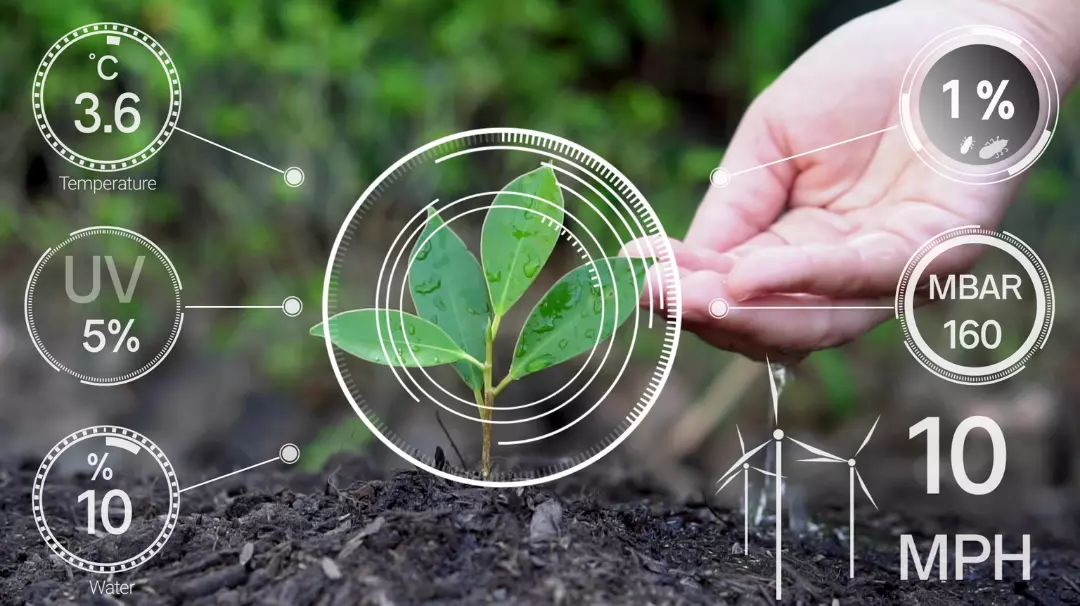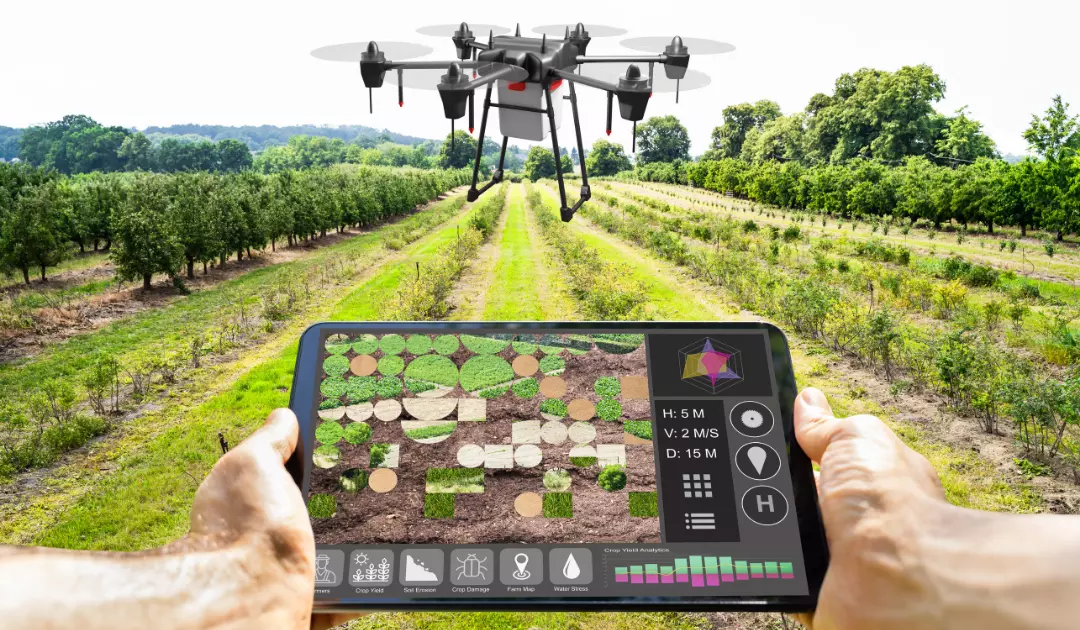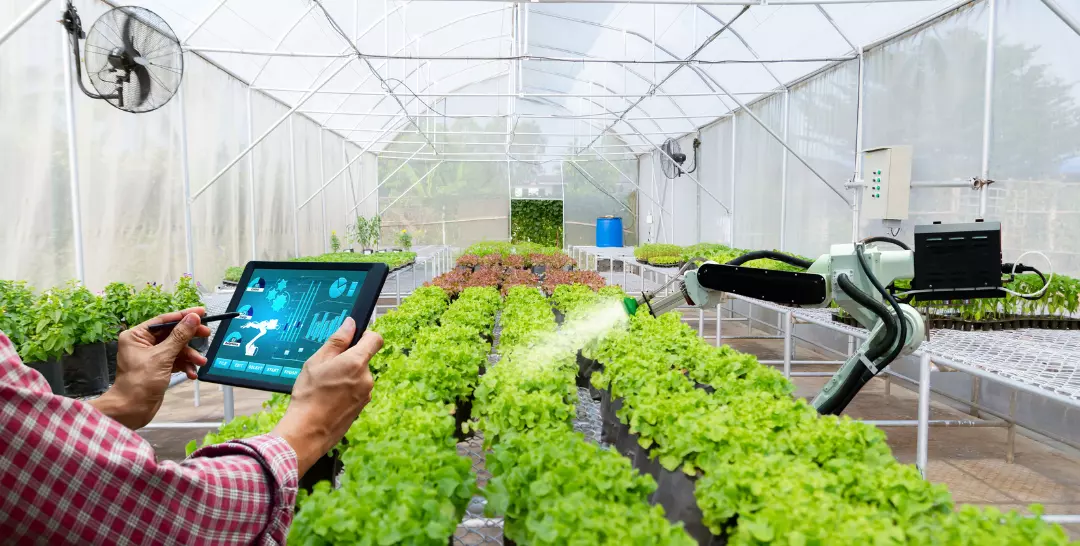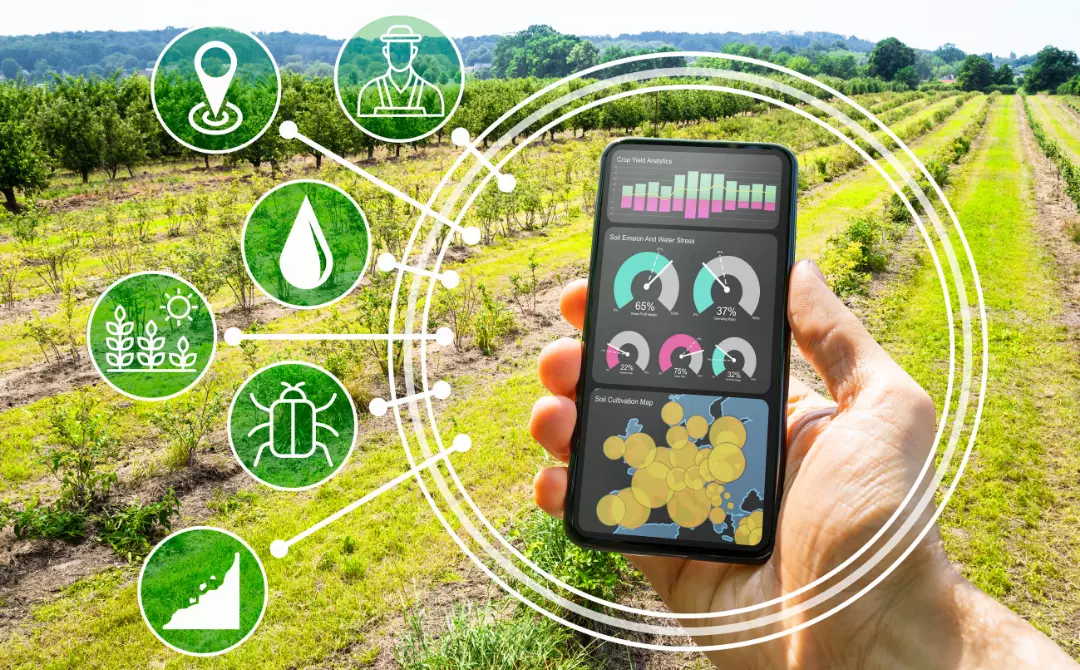15 Examples of the Use of Augmented Reality (AR) in Agriculture
Posted on March 28, 2023 5 minutes 906 words
Table of contents
- 1. Precision Farming with AR
- 2. AR-Based Crop Planning
- 3. Pest and Disease Identification
- 4. AR-Enabled Equipment Maintenance
- 5. Livestock Monitoring and Health Assessment
- 6. Drone-Assisted Field Scouting
- 7. AR-Powered Farm Training and Education
- 8. Supply Chain Traceability
- 9. Interactive Marketing and Sales
- 10. Virtual Farm Tours
- 11. Water Management and Irrigation
- 12. AR-Enabled Greenhouses
- 13. Sustainable Resource Management
- 14. Agri-Tourism and Experiential Learning
- 15. AR-Enhanced Collaboration and Networking
- Conclusion
Augmented reality (AR) has come a long way in recent years, with its applications spreading across various industries, from gaming and entertainment to healthcare and education. The agriculture sector is no exception, as AR technology offers numerous benefits that can enhance efficiency, productivity, and sustainability. In this blog post, we will explore 15 groundbreaking examples of how augmented reality is transforming modern farming practices.
1. Precision Farming with AR
AR technology can help farmers monitor crop health, soil conditions, and weather patterns in real-time, leading to data-driven decision-making. For example, xarvio’s SCOUTING app allows farmers to detect plant stress, diseases, and pests by simply pointing their smartphones at a plant. This information helps farmers make informed decisions about when and where to apply fertilizers, pesticides, and other treatments.

2. AR-Based Crop Planning
Augmented reality enables farmers to visualize different crop layouts and planting scenarios on their land. By overlaying digital information onto the physical environment, farmers can optimize land use, crop rotation, and productivity. Companies like Agroptima are developing AR tools that allow farmers to create virtual field maps and plan their crops efficiently.
3. Pest and Disease Identification
Using AR, farmers can quickly and accurately identify pests and diseases affecting their crops. Platforms like Plantix provide instant diagnoses by analyzing images of the affected plants. Early detection and intervention can reduce crop losses and minimize the use of harmful chemicals.
4. AR-Enabled Equipment Maintenance
Augmented reality can help farmers maintain and repair agricultural machinery by providing real-time, step-by-step instructions and visualizations. Caterpillar, for example, uses an AR app that guides users through equipment maintenance tasks, reducing downtime and ensuring optimal performance.
5. Livestock Monitoring and Health Assessment
AR technology enables farmers to monitor livestock health, track movement, and administer treatments more efficiently. Cargill’s iQuatic app uses AR to monitor fish health in aquaculture operations, providing insights into water quality, fish growth, and feeding patterns.
6. Drone-Assisted Field Scouting
Combining AR with drone technology provides farmers with detailed field data for enhanced crop management. DroneDeploy’s Fieldscanner app integrates AR technology to overlay real-time drone imagery onto physical fields, allowing farmers to identify crop stress, pest infestations, and nutrient deficiencies with greater precision.

7. AR-Powered Farm Training and Education
Augmented reality can create immersive learning experiences for farmers, improving their knowledge and skills. The Virtual Grange, an app developed by Penn State Extension, provides AR-based training modules on topics like crop scouting, soil management, and pesticide safety.
8. Supply Chain Traceability
AR can offer real-time information about the origin and journey of agricultural products, improving transparency and food safety. Companies like OriginTrail use blockchain technology combined with AR to provide detailed information about a product’s provenance, processing, and transportation.
9. Interactive Marketing and Sales
AR can create engaging experiences for customers, driving interest and sales of agricultural products. One example is the Winefindr app, which allows users to scan wine labels with their smartphones and access detailed information about the wine, including tasting notes, food pairings, and production methods.
10. Virtual Farm Tours
AR technology enables people to experience farming practices and learn about agriculture from anywhere. Virtual farm tours, like those offered by FarmAR, allow users to explore real farms, interact with animals, and gain insights into sustainable farming practices.
11. Water Management and Irrigation
AR technology can help farmers monitor water usage, identify leaks, and ensure efficient irrigation practices. A great example is the Israeli company N-Drip, which uses AR to visualize water distribution and pressure in drip irrigation systems, allowing farmers to optimize water use and reduce waste.
12. AR-Enabled Greenhouses
Augmented reality can optimize greenhouse management by providing real-time data on environmental conditions and plant growth. Companies like Motorleaf use AI and AR to help greenhouse operators monitor temperature, humidity, and other factors, ensuring optimal growing conditions for their plants. By visualizing this data in real-time, farmers can make adjustments to factors like lighting, irrigation, and ventilation, leading to healthier plants and higher yields.

13. Sustainable Resource Management
AR can promote sustainable farming by providing farmers with data on soil health, crop rotation, and resource usage. The Soil Test Pro app, for example, allows farmers to collect and analyze soil samples using their smartphones, giving them insights into nutrient levels and soil health. This information can be used to create tailored nutrient management plans, reducing the need for synthetic fertilizers and improving soil health.
14. Agri-Tourism and Experiential Learning
AR can enhance agritourism experiences by providing interactive and immersive educational opportunities. Apps like FarmAR offer guided AR tours of working farms, teaching visitors about sustainable agriculture, animal welfare, and farm-to-table practices. These experiences can increase public awareness and support for local agriculture.
15. AR-Enhanced Collaboration and Networking
Augmented reality can connect farmers, researchers, and industry professionals, fostering collaboration and knowledge exchange. Platforms like AgriSync use AR to facilitate remote consultations and troubleshooting, allowing experts to provide real-time assistance to farmers without the need for physical travel.
Conclusion
The benefits of augmented reality in agriculture are vast and far-reaching, with the potential to revolutionize farming practices and improve sustainability. As technology advances and adoption increases, AR will play an increasingly significant role in shaping the future of agriculture. By exploring and engaging with AR technology, farmers, researchers, and consumers can work together to support the growth and adoption of these innovative solutions, ensuring a more sustainable and efficient future for the agriculture industry.








